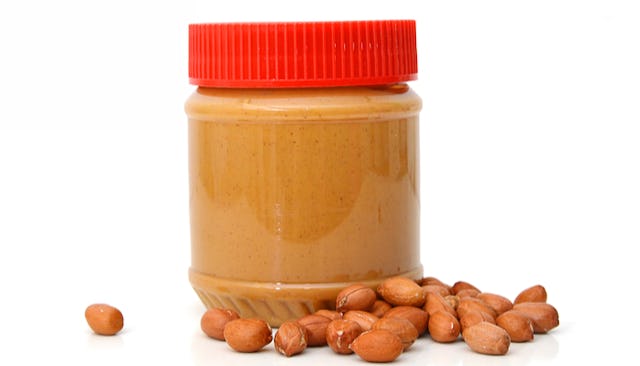New Allergy Guidelines Suggest Peanuts Should Be On The Menu For Babies

New guidelines say feeding babies peanut-based foods early may prevent allergies
If you’re pregnant or have a young infant you’ve probably heard that it’s best to wait a year or longer before introducing peanuts into your child’s diet. But brand new guidelines were issued this week by the National Institute of Allergies and Infectious Diseases and as it turns out, the sooner babies are exposed to peanut butter the better. Pass the Jif, please.
The new recommendations work under the theory that exposing babies to peanuts early on will make their bodies less likely to have an adverse reaction. They call for exposing all infants, even those considered high risk for peanut allergies, to peanuts at a younger age.
The guidelines put babies into three groups: babies with no known allergies, babies with mild to moderate eczema and babies with severe eczema or an already established egg allergy.
Babies with no known allergies are considered to be at low risk, and can be given food that contains peanuts whenever it’s “age appropriate and in accordance with family preferences and cultural practices.” So if you catch your four-month-old gumming a crumb from their older siblings’ peanut butter cups and they’re in this category, you can relax.
Babies with mild to moderate eczema can be fed food that contains peanuts around six months.
If your baby has severe eczema or an already developed allergy to eggs, then they should be exposed to peanuts around four to six months. The guidelines recommend doing so with the assistance of a doctor, just in case there’s an allergic reaction.
The new guidelines are the result of studies that found the old recommendations of waiting to expose babies to peanuts seemed to be increasing the rate of peanut allergies in the U.S. In 1999 less than half of one percent of children in America was allergic to peanuts. By 2010, that number had more than doubled. A 2015 study that tracked the allergy rates in babies who were exposed to peanuts early on versus ones that were not suggests the answer in lowering that rate may lie in exposing children to peanuts from a young age in hopes that their bodies will accept peanut proteins rather than having a reaction to them.
“You have the potential to stop something in its tracks before it develops,” Dr. Matthew Greenhawt, Chairman of the American College of Allergy, Asthma and Immunology’s Food Allergy Committee and co-author of the new guidelines told The New York Times. Dr. Greenhawt says there “is a window of time in which the body is more likely to tolerate a food than react to it and if you can educate the body during that window, you’re at much lower likelihood of developing an allergy to that food.”
The guidelines caution against feeding a baby actual peanuts, as even chopped ones are a choking risk. They offer a few recipes for introducing your infant to peanut foods, such as thinned peanut butter or purees made with powdered peanut butter and fruit.
Even if your infant is at low risk for developing a peanut allergy, it’s always good to watch for symptoms. Mild symptoms can look like a rash for just a few hives on the face or around the mouth. More severe symptoms of an allergy to watch for include and any all of the following: lip, face or tongue swelling, vomiting, body hives, trouble breathing, wheezing, repetitive coughing, change in skin color to pale or blue or a sudden tiredness or limpness in your child.
Dr. Greenhawt said these new guidelines won’t compete eradicate peanut allergies in children, but they’re a great start. “There will still be some cases — but that number could be significantly reduced by tens of thousands, ” he said. “In the best case scenario, every allergist across the U.S. could be seeing fewer cases of peanut allergy — and that’s a good problem to have.”
This article was originally published on